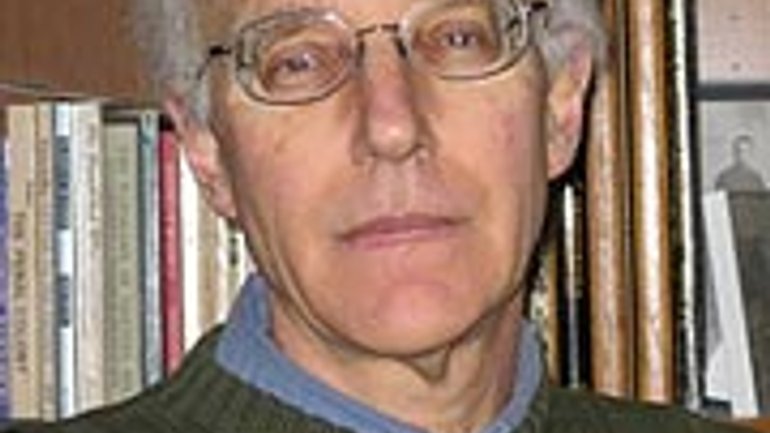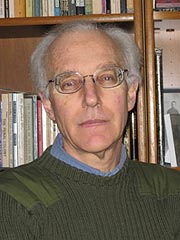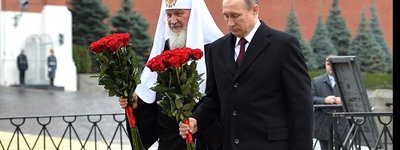Two Visions Of East Slavic Christendom

 On 10 November RISU, citing RIA News, reported that Fr. Dmytro Syzonenko, Secretary of the Russian Orthodox Church’s Department of External Church Relations, had criticized the creation of three new metropolitanates by the Ukrainian Greek Catholic Church. While church structures are an internal matter of the Church, the establishment of metropolitanates in regions that the ROC considers non-Catholic would, according to Fr. Syzonenko, cause tensions in Orthodox-Catholic relations. Ukraine is such a region. According to the ROC, Ukraine is part of the canonical territory of the Moscow Patriarchate.
On 10 November RISU, citing RIA News, reported that Fr. Dmytro Syzonenko, Secretary of the Russian Orthodox Church’s Department of External Church Relations, had criticized the creation of three new metropolitanates by the Ukrainian Greek Catholic Church. While church structures are an internal matter of the Church, the establishment of metropolitanates in regions that the ROC considers non-Catholic would, according to Fr. Syzonenko, cause tensions in Orthodox-Catholic relations. Ukraine is such a region. According to the ROC, Ukraine is part of the canonical territory of the Moscow Patriarchate.
Why is the Moscow Patriarchate concerned by the structural development of the UGCC? There are several possible interpretations. Some observers cite the old issue of church property in Western Ukraine which, in the 1990s, passed from the ROC back to the UGCC. But while Patriarch Kirill continues to refer with regret to the “loss” of ROC churches, he seems reconciled to it. Observers also cite the financial factor: the loss of parishes to the UGCC has meant the loss of considerable income. But this already occurred in the 1990s, and the new measures are not likely to cause new losses. Nor is a mass exodus from Moscow’s Orthodox parishes to the UGCC likely: it is the Ukrainian Orthodox Church of the Kyivan Patriarchate, rather, that poses such a threat.
Russian Orthodox spokesmen have often objected to Catholic “expansion to the East,” particularly by the UGCC. But the new metropolitanates will be based in L’viv, Ivano-Frankivsk, and Ternopil – areas that are already overwhelmingly Greek-Catholic and have been for three centuries. There is no encroachment on the “Orthodox territory” of central and eastern Ukraine.
But Fr. Syzonenko seems to consider all of Ukraine to be Orthodox canonical territory. This concept is, of course, problematic, because the idea that any territory should be in the exclusive jurisdiction of one Church has long been abandoned as inconsistent with religious liberty and the de facto religious pluralism of today’s world. Moreover, this is a false objection, because the ROC has created jurisdictions that co-exist with those of other Churches, particularly in Europe. Patriarch Kirill himself served as metropolitan of Smolensk and Kaliningrad, but it would be a stretch of the imagination to consider the latter city -- known for centuries as Koenigsberg, the Protestant East Prussian city of Immanuel Kant – as canonical Orthodox territory. And if history could change a Protestant land into an Orthodox one, then it can also change an Orthodox land into a Catholic one. In short, this argument is groundless.
But as Fr. Syzonenko noted, the creation of new metropolitanates strengthens the UGCC’s position. And this, perhaps, is the real problem for the Moscow Patriarchate. For as UGCC Major Archbishop Sviatoslav has said, such steps lead towards a patriarchate. For Moscow, a Greek-Catholic patriarchate would be intolerable, for it would raise a Uniate Church, which it considers to be an aberration, to a level of equality with a canonical Orthodox patriarchate.
The problem is even deeper than that, however. A strong Ukrainian Greek-Catholic Church on Ukrainian territory militates against the ROC’s vision of East Slavic Christendom, which is a part of contemporary Russia’s vision of the “Russian World” and Vladimir Putin’s “Eurasian Union.”
That vision is only the latest concept advanced by Moscow in its dealings with the rest of the Slavic and Christian world. It is a successor to the sixteenth-century “Third Rome” concept by which Moscow succeeded Rome and Byzantium as the center of Christendom, the gradual “gathering of the Rus’ lands” as Muscovy expanded, and the role of imperial Russia as guardian of all Orthodox Christians. The “Russian world” emphasizes Russian Orthodoxy, Russian political traditions, and the Russian language and culture. The “Eurasian Union” would concretize that world in a political structure.
Ukraine’s role is central to the “Russian world” vision, because Ukraine is the location of Kyiv, the center of Kyivan Rus’. The “Russian world” appeals to the tradition of Kyivan Rus’, but it posits a mythical Rus’ that never existed: one that is unified, centralized, and Muscovite in orientation. In this vision, Ukraine is not a separate nation, but a branch of Russia, which must be united with the Russian Federation and Belarus in a new East Slavic entity that is Orthodox by religion and centered in Moscow. Neither an independent Ukraine, nor an independent Ukrainian Church – whether Orthodox or Catholic – could have any place in this scheme.
The vision of East Slavic Christendom advanced by Major Archbishop Sviatoslav and his predecessors from Metropolitan Andrei Sheptytsky to Major Archbishop Lubomyr Husar is radically different from, and inconsistent with, that of the ROC under Patriarch Kirill.
That vision is characterized by (1) an ecumenical outlook, (2) unity in diversity, (3) subsidiarity, (4) respect for the individual, and (5) religious freedom. In that vision, East Slavic Churches, both Catholic and Orthodox, seek unity with each other, at least on the level of communion. The UGCC seeks communion with the Orthodox Churches of Ukraine and other countries as sister Churches, ideally achieving and maintaining ties with both Rome and Constantinople. Ecumenism rejects the absorption of one Church by another. It sees Slavia Orthodoxa and the Latin West as complementary rather than mutually opposed.
The principle of unity in diversity, adopted by the Catholic Church, permits Orthodox Churches to retain their theological, spiritual, ritual, and canonical traditions when they enter into communion with the Roman Church and accept the primacy of the Pope. The Catholic principle of subsidiarity avoids centralism, leaving local decisions to local organs; thus, each Church in the Catholic communion retains broad autonomy. Respect for the individual – in both the civil and the spiritual spheres – is balanced with the individual’s responsibility to the community, but is opposed to communal thinking and the submersion of all individuality in the collective. In the spiritual sphere, this respect is manifested in religious freedom. Religious freedom in turn requires Church independence from the state – that is, a secular state separate from the Church. It rejects a state Church or even a state religion. Yet this position actually makes possible a Byzantine-style harmony or “symphonia” between the state and the Church as equal partners – as distinguished from the false “symphonia” of Churches that are in fact subservient to the state.
Ukrainians are thus faced with a choice between two radically different approaches to building East Slavic Christendom. To be sure, each one has its attractions. The “Russian world” is a simple, unambiguous concept, consistent with Russian foreign policy. It would create a single Ukrainian Orthodox Church working closely with the state, in close cooperation with the Orthodox Church and state of Belarus, and all under Moscow. Other Churches would be marginalized. Such a vision is likely to appeal to Orthodox Christians unconcerned with the Ukrainian spiritual heritage.
The European vision of Major Archbishop Sviatoslav and his Church, on the other hand, is complex: a community of local East Slavic Churches forming part of a broader communion stretching from Rome to Constantinople. It would posit the existence of an independent democracy in Ukraine with separation of Church and state, a civil society under the rule of law, and other attributes of the European tradition. Critics would point out that such an approach has taken Europe itself down the road of secularism. Supporters will argue that such a result is incidental, not necessary.
Patriarch Kirill’s reaction to the elaboration of the Ukrainian Greek-Catholic Church structure is thus understandable. For what is at stake is not just the strengthening of a rival Church. It is the advancement of a vision of East Slavic Christendom fundamentally at odds with that of his Church and government.










